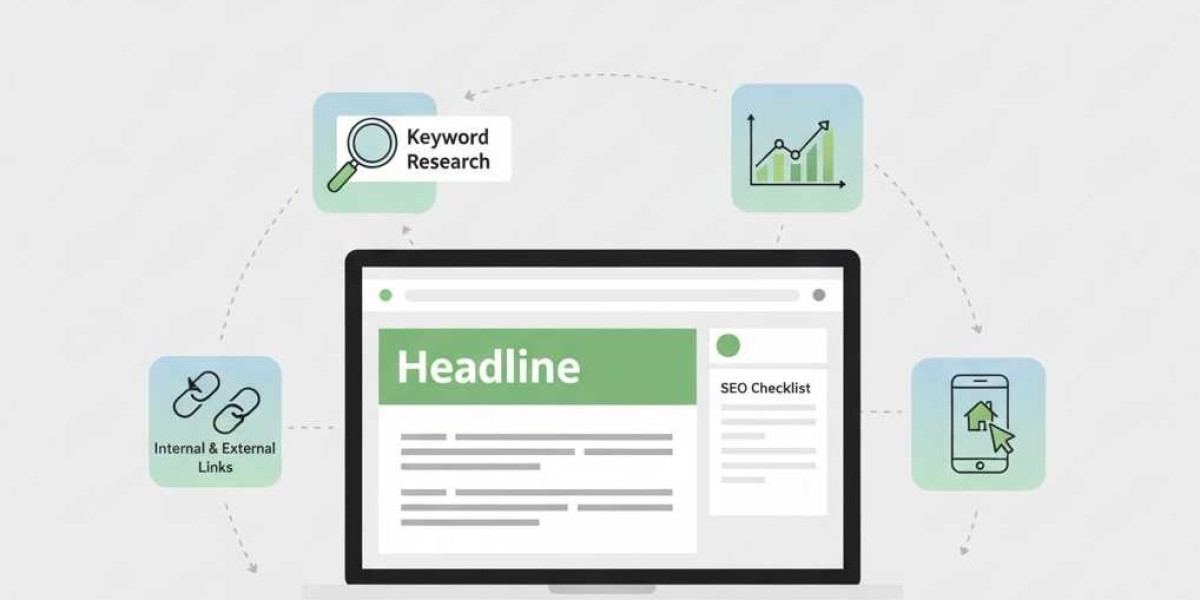In the digital age, creating valuable content is just the beginning. If your blog posts aren’t optimized for SEO, they might never reach the audience you want. SEO (Search Engine Optimization) ensures your content is discoverable on search engines like Google, driving organic traffic and increasing brand visibility. For businesses focusing on local SEO, mastering blog optimization can also help you rank higher in Google Maps and outperform competitors in your area. In this guide, we’ll explore proven strategies to optimize blog posts effectively, covering everything from keyword research to digital marketing techniques.
1. Start with Keyword Research
The foundation of SEO is keywords. Keywords are the words and phrases people type into search engines when looking for information. To optimize your blog post:
Identify relevant keywords: Use tools like Google Keyword Planner, SEMrush, or Ahrefs to find keywords related to your niche.
Focus on local keywords: If you want to improve local SEO, include location-based keywords such as “best coffee shop in Austin” or “plumber near me.”
Consider search intent: Are users looking for information, products, or services? Tailor your keywords to match their intent.
Use long-tail keywords: These are more specific phrases like “how to optimize blog posts for SEO in 2025” that have lower competition but higher conversion potential.
Tip: Incorporate Keywords Naturally
Avoid keyword stuffing. Use your primary keyword in the title, headers, meta description, URL, and throughout the content naturally.
2. Optimize Titles and Meta Descriptions
The title tag and meta description are often the first things a user sees in search results. They play a critical role in click-through rates and SEO.
Title: Keep it under 60 characters and include your main keyword. Make it compelling and clear.
Meta description: Summarize the blog post in 150–160 characters. Include relevant keywords and a call-to-action, like “Learn how to optimize your blog posts for SEO today!”
Example:
Title: How to Optimize Blog Posts for SEO: Boost Traffic & Rankings
Meta Description: Learn proven strategies to optimize blog posts for SEO, improve local SEO, and rank higher in Google Maps with effective keywords and digital marketing techniques.
3. Create High-Quality, Engaging Content
Google rewards content that provides value to readers. Here’s how to make your blog posts high-quality:
Answer user questions: Use tools like AnswerThePublic to find common questions your audience is asking.
Use headings and subheadings: Organize your content with H1, H2, and H3 tags. This improves readability and SEO.
Add visuals: Images, infographics, and videos increase engagement. Remember to optimize images with alt text containing keywords.
Provide actionable insights: Give readers practical steps they can follow, increasing the likelihood they’ll stay longer on your page.
Tip: Focus on Readability
Break text into short paragraphs, use bullet points, and include transitional phrases to make your content easy to scan.
4. Leverage Internal and External Links
Linking is a critical component of SEO:
Internal links: Link to other blog posts or pages on your website. This helps search engines understand your site structure and keeps visitors engaged longer.
External links: Link to authoritative sources to back up your content. High-quality outbound links can improve credibility and SEO rankings.
5. Optimize for Mobile and Page Speed
Google uses mobile-first indexing, meaning your mobile site version is prioritized in search results. Ensure your blog is:
Mobile-responsive: Displays correctly on all devices.
Fast-loading: Compress images, use caching, and choose a reliable hosting service.
Easy to navigate: Clear menus, readable fonts, and clickable buttons improve user experience and SEO.
6. Utilize Local SEO and Google Maps
For businesses targeting a local audience, local SEO is essential:
Claim and optimize your Google My Business listing.
Include your location in your blog’s keywords and headings.
Encourage customers to leave reviews, which can improve your ranking on Google Maps.
Embed Google Maps on your website to make your location visible and accessible.
Optimizing your blog for local search can directly affect your visibility in search ads and organic results, bringing in more customers from your area.
7. Focus on On-Page SEO Elements
On-page SEO refers to optimizing elements on your webpage. Key components include:
URL structure: Keep URLs short and keyword-rich. Example:
www.example.com/seo-blog-optimization.Header tags: Use H1 for the main title, H2 for main sections, and H3 for subsections.
Meta tags: Besides the meta description, use meta keywords sparingly but strategically.
Alt text for images: Describe images with keywords to improve SEO and accessibility.
8. Promote Your Content with Digital Marketing
Creating optimized content isn’t enough; you need to promote it:
Search Ads and Google Ads: Run campaigns targeting your blog’s keywords to drive traffic.
Display Ads: Use visually appealing ads on the Google Display Network to reach a broader audience.
Social Media Marketing: Share posts on platforms like LinkedIn, Facebook, and Instagram to increase reach.
Email Marketing: Send newsletters with blog links to your subscriber list.
Tip: Integrate Traditional Marketing
Combine digital strategies with traditional marketing efforts such as flyers, print ads, or local events to drive traffic to your blog and increase engagement.
9. Track Performance and Update Content Regularly
SEO is an ongoing process. To maintain and improve your rankings:
Use analytics tools: Google Analytics and Google Search Console provide insights into traffic, user behavior, and keyword performance.
Update old posts: Refresh outdated information, add new keywords, and optimize for new trends.
Monitor competitors: Keep an eye on what other blogs in your niche are ranking for and adjust your strategy accordingly.
Tip: Trend Marketing
Stay ahead by integrating trend marketing—creating content around current events or trending topics relevant to your niche. This can boost traffic and enhance your authority in your industry.
Conclusion
Optimizing blog posts for SEO is a multi-step process that combines keyword research, content creation, on-page optimization, local SEO, and promotion. By following these strategies, you can improve your search rankings, attract more readers, and enhance your online presence. Remember, SEO isn’t a one-time effort—it’s a continuous journey that requires monitoring, updating, and adapting to search engine algorithm changes.
Start implementing these strategies today and watch your blog posts climb higher in Google rankings, gain traction on Google Maps, and drive more traffic to your website.



